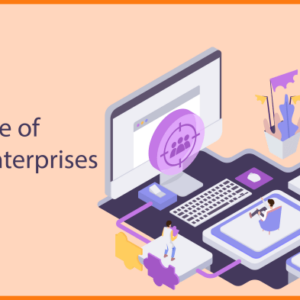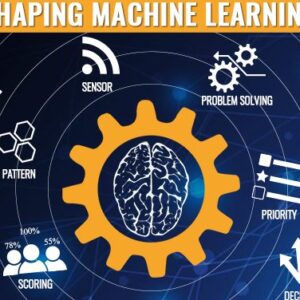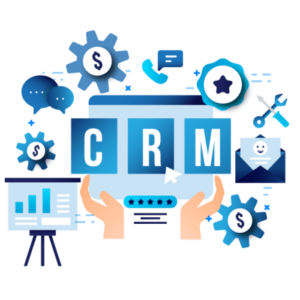How to Choose the Right CRM System for Your Business in 2025? It’s a question every forward-thinking business owner wrestles with. In 2025, the CRM landscape is a wild west of options, each promising streamlined workflows and skyrocketing sales. But choosing the wrong one? That’s a recipe for digital disaster. This guide cuts through the noise, helping you navigate the complexities and find the perfect CRM to fuel your business’s growth.
We’ll explore everything from understanding your specific needs in 2025’s dynamic market to evaluating crucial features, choosing the right deployment model (cloud, on-premise, or hybrid), and budgeting effectively. We’ll also delve into vital integration and scalability considerations, vendor selection, implementation strategies, and, crucially, data security and privacy. Get ready to ditch the CRM confusion and embrace a system that truly works for YOU.
Understanding Your Business Needs in 2025: How To Choose The Right CRM System For Your Business In 2025
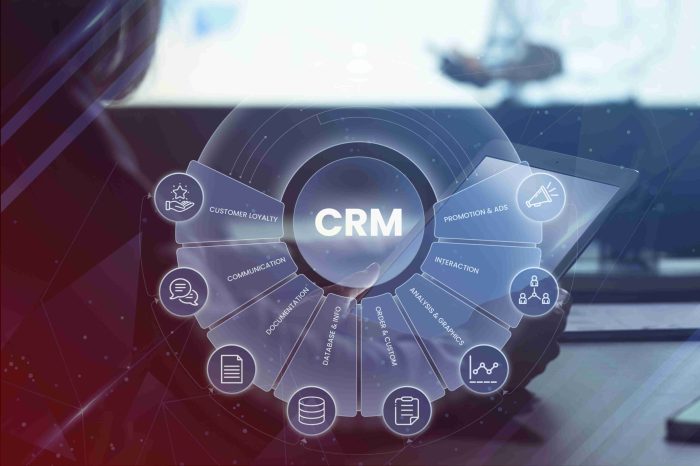
Source: salebee.net
Choosing the right CRM in 2025 isn’t just about ticking boxes; it’s about aligning your tech with your evolving business strategy. The market’s dynamic, and your CRM needs to keep pace. Ignoring this can lead to wasted resources and missed opportunities. This section will help you assess your specific needs in the context of current and future trends.
Several key factors demand consideration when evaluating your CRM requirements for 2025. The rise of AI, the increasing importance of data privacy, and the continued shift towards remote and hybrid work models are just a few of the significant changes impacting businesses. Your CRM needs to be flexible enough to adapt to these shifts and robust enough to support your growth.
Emerging Business Challenges Mitigated by CRM Systems
Three significant challenges facing businesses in 2025, and how a well-chosen CRM can help address them:
A robust CRM system can be instrumental in navigating these complexities. Let’s delve into these challenges and see how a well-chosen CRM can provide solutions.
- Increased Customer Expectations: Customers today expect personalized experiences across all touchpoints. A CRM system allows for detailed customer profiling, enabling targeted marketing campaigns and personalized communication, thereby exceeding customer expectations and fostering loyalty.
- Data Security and Privacy Concerns: With increasingly stringent data privacy regulations (like GDPR and CCPA), businesses need CRM systems with robust security features and compliance capabilities. A well-chosen CRM ensures data protection and helps businesses avoid costly fines and reputational damage.
- Maintaining Team Collaboration in Hybrid Work Environments: The shift to hybrid work models necessitates seamless communication and collaboration across teams. A CRM system with centralized data and integrated communication tools helps maintain productivity and alignment, regardless of location.
CRM Needs: Small Startup vs. Large Enterprise
The ideal CRM varies drastically depending on the size and nature of your business. Here’s a comparison:
| Feature | Small Startup | Large Enterprise | Justification |
|---|---|---|---|
| User Base | Small, potentially owner-managed | Large, distributed across departments and locations | Scalability is key for enterprise; smaller startups need simplicity and ease of use. |
| Functionality | Basic contact management, sales pipeline tracking, email integration | Advanced features like marketing automation, sales forecasting, customer segmentation, and complex reporting | Startups prioritize core functionality; enterprises require sophisticated tools for managing large datasets and complex processes. |
| Integration | Limited integrations with essential tools (e.g., email, calendar) | Extensive integrations with various enterprise applications (e.g., ERP, marketing automation platforms) | Startups focus on essential integrations; enterprises need seamless data flow across multiple systems. |
| Budget | Cost-effective solutions with subscription-based models | Higher budget allowing for customization and specialized support | Startups operate on tighter budgets; enterprises can invest more in comprehensive solutions. |
Evaluating CRM Features and Functionality
Choosing the right CRM isn’t just about ticking boxes; it’s about finding a system that seamlessly integrates with your business processes and future goals. In 2025, a CRM is more than just a contact list – it’s a strategic tool for growth. Understanding the core functionalities and how they align with your needs is paramount.
The core functionalities of a CRM system are interconnected, forming a powerful ecosystem for managing customer interactions and driving business growth. Each module contributes to a holistic view of your customer, enabling smarter decision-making and more efficient operations. Let’s delve into the key features you should be considering.
Contact Management
Robust contact management is the bedrock of any effective CRM. Beyond basic contact details, a powerful CRM system will allow for detailed customer profiling, including purchase history, interaction logs, and social media activity. This holistic view allows for personalized communication and targeted marketing efforts. For instance, a clothing retailer might use contact management to segment customers based on preferred styles and past purchases, enabling them to send tailored recommendations and promotions. The ability to manage multiple contact points (email, phone, social media) within a unified profile is crucial for providing a seamless customer experience.
Sales Automation
Sales automation streamlines the sales process, freeing up valuable time for sales representatives to focus on building relationships and closing deals. Features like automated email sequences, lead scoring, and sales pipeline management significantly improve sales efficiency. Imagine a scenario where a sales team uses automated email sequences to nurture leads, sending personalized follow-ups based on their engagement. This automation not only saves time but also increases conversion rates by ensuring timely and relevant communication.
Marketing Automation
Marketing automation tools integrated within a CRM allow for targeted campaigns, personalized messaging, and efficient campaign management. This goes beyond simple email marketing; it encompasses lead nurturing, social media management, and even advanced analytics to measure campaign effectiveness. For example, a CRM with robust marketing automation could segment customers based on their behavior (website visits, email opens) and trigger personalized email campaigns or targeted social media ads. This level of personalization leads to higher engagement and improved ROI.
Customer Service Features
Excellent customer service is crucial for customer retention and brand loyalty. A CRM system with integrated customer service features such as ticketing systems, live chat, and knowledge bases enables efficient and effective support. Think of a company using a CRM-integrated help desk to track customer inquiries, assign tickets to agents, and monitor resolution times. This centralized system ensures quick responses and consistent service quality, enhancing customer satisfaction.
Cloud-Based vs. On-Premise CRM Systems
The choice between cloud-based and on-premise CRM systems depends largely on your business size, technical capabilities, and budget.
Cloud-based CRM systems offer scalability, accessibility, and cost-effectiveness, making them ideal for businesses of all sizes. They require minimal IT infrastructure and offer automatic updates, reducing maintenance overhead. However, reliance on internet connectivity is a potential drawback.
On-premise CRM systems offer greater control over data security and customization but require significant upfront investment in hardware, software, and IT expertise. They are generally more suitable for larger enterprises with dedicated IT teams.
Five Essential CRM Features for 2025
Choosing a CRM in 2025 requires careful consideration of features that support advanced analytics, AI-powered insights, and seamless integration with other business tools.
A robust CRM system in 2025 needs to include:
- AI-powered predictive analytics: Predictive analytics, powered by AI, allows businesses to anticipate customer behavior, predict sales trends, and proactively address potential issues. For example, a CRM could predict which customers are at risk of churning based on their recent activity and alert the sales team to take proactive measures.
- Seamless integration with other business tools: Integration with marketing automation platforms, e-commerce systems, and other business applications is crucial for a unified view of the customer journey. This allows for streamlined workflows and efficient data management.
- Mobile accessibility: Access to CRM data from anywhere, anytime, is essential for today’s mobile workforce. A mobile-friendly CRM interface empowers sales teams and customer service representatives to stay connected and responsive.
- Advanced reporting and dashboards: Real-time data visualization and customized reporting are vital for informed decision-making. Dashboards should provide key performance indicators (KPIs) at a glance, allowing businesses to track progress and identify areas for improvement.
- Robust security and data privacy features: With increasing data privacy regulations, robust security measures are non-negotiable. The CRM system should comply with relevant regulations and offer strong data encryption and access controls.
Choosing the Right Deployment Model
Picking the perfect CRM deployment model is like choosing the right coffee blend – you need to consider your taste (business needs) and brewing method (resources). Getting this wrong can lead to a bitter experience, so let’s break down the options. In 2025, the choice is more nuanced than ever, with each model offering unique advantages and challenges.
The three main deployment models are cloud-based (SaaS), on-premise, and hybrid. Each offers a distinct approach to CRM implementation, impacting everything from cost and scalability to security and control. Understanding these differences is key to making an informed decision.
Cloud-Based CRM Deployment
Cloud-based CRM, or Software as a Service (SaaS), is the most popular option for businesses of all sizes in 2025. This model involves accessing the CRM software via the internet, hosted by a third-party provider.
Benefits: Lower upfront costs, scalability, accessibility from anywhere with an internet connection, automatic updates, and reduced IT maintenance are major draws. Companies like Salesforce and HubSpot have established themselves as leaders in this space, offering robust and feature-rich solutions. For example, a rapidly growing startup could easily scale its CRM usage with a cloud-based solution, adding users and features as needed without significant upfront investment in hardware or IT infrastructure.
Drawbacks: Dependence on internet connectivity, potential vendor lock-in, and concerns about data security and privacy are potential downsides. The reliance on a third-party provider means you are subject to their service level agreements and potential outages. Data breaches, while rare with reputable providers, remain a possibility. Effective mitigation strategies include thorough due diligence on the vendor’s security protocols and compliance certifications, along with implementing robust internal security measures such as multi-factor authentication.
Security Considerations: Reputable cloud providers invest heavily in security infrastructure, often exceeding what many businesses could afford independently. However, data breaches can still occur. Mitigation strategies include choosing providers with strong security certifications (like ISO 27001), implementing strong password policies, and regularly reviewing access permissions. Data encryption both in transit and at rest is crucial.
On-Premise CRM Deployment
With on-premise CRM, the software is installed and maintained on your company’s own servers. This gives you complete control over your data and infrastructure.
Benefits: Greater control over data security, customization options, and no reliance on internet connectivity are key advantages. Businesses with stringent regulatory compliance requirements often favor this approach, as they maintain complete control over their data and infrastructure. For example, a financial institution handling sensitive client data might prefer on-premise deployment to maintain strict control over data security and comply with regulations.
Drawbacks: High upfront costs for hardware and software, significant ongoing IT maintenance requirements, limited scalability, and the need for dedicated IT staff are significant drawbacks. The initial investment can be substantial, requiring a dedicated team to manage the system and ensure its ongoing performance. Scaling the system can also be complex and expensive, requiring additional hardware and potentially software licenses.
Security Considerations: While you have more direct control, securing an on-premise system requires significant expertise and investment. This includes firewalls, intrusion detection systems, regular security audits, and robust data backup and recovery plans. Failure to implement these measures can lead to significant security vulnerabilities.
Hybrid CRM Deployment
A hybrid approach combines elements of both cloud-based and on-premise deployments. This offers flexibility to leverage the strengths of both models.
Benefits: This model allows businesses to balance control and cost-effectiveness. Sensitive data can be stored on-premise, while less critical data can reside in the cloud. This approach provides a degree of flexibility and customization not always possible with purely cloud-based or on-premise solutions. For instance, a company might store customer contact information in the cloud for ease of access and scalability, while maintaining sensitive financial data on-premise for enhanced security.
Drawbacks: Increased complexity in management and integration, requiring skilled IT staff to manage both environments. The need for careful planning and coordination between the on-premise and cloud components can add to the overall cost and complexity of the deployment. Maintaining a hybrid system requires expertise in both cloud and on-premise technologies.
Security Considerations: Security needs to be carefully managed across both environments. Consistent security policies and procedures must be implemented across both platforms, with regular audits and monitoring to ensure data integrity and confidentiality. This requires a strong understanding of security best practices for both cloud and on-premise systems.
Decision Tree for Choosing a CRM Deployment Model
The optimal deployment model depends on several factors. The following decision tree can help guide your choice:
1. Budget: Limited budget? Consider cloud-based. Significant budget? Explore on-premise or hybrid.
2. IT Resources: Limited IT staff? Cloud-based is generally simpler. Dedicated IT team? On-premise or hybrid are viable.
3. Data Security Requirements: Strict compliance needs? On-premise or hybrid might be necessary. Less stringent requirements? Cloud-based is often sufficient.
4. Scalability Needs: Rapid growth anticipated? Cloud-based offers better scalability. Stable growth? On-premise or hybrid can be suitable.
5. Customization Needs: High level of customization required? On-premise offers more flexibility. Standard features sufficient? Cloud-based is often adequate.
By carefully considering these factors, businesses can choose the CRM deployment model that best aligns with their specific needs and resources in 2025.
Budgeting and Cost Considerations

Source: ctfassets.net
Choosing a CRM isn’t just about finding the right features; it’s about finding the right fit for your budget. Ignoring the financial implications can lead to unexpected expenses and strain your resources. Understanding the various cost components and comparing total cost of ownership (TCO) across different solutions is crucial for making an informed decision in 2025.
Cost Components of CRM Implementation and Maintenance
Implementing and maintaining a CRM system involves several cost components. These go beyond the initial software purchase or subscription fee. Failing to account for these hidden costs can significantly impact your overall budget. A comprehensive understanding of these components allows for better financial planning and prevents unforeseen budget overruns.
Licensing fees are the most obvious cost. These fees can vary dramatically depending on the CRM system, the number of users, and the features included. Implementation costs include the time and resources required to set up the system, integrate it with existing systems, and train your employees. This often involves consulting fees, data migration costs, and internal staff time. Ongoing maintenance includes software updates, technical support, and potential customizations. Regular maintenance is crucial for system stability and security, ensuring your data remains protected and your CRM functions optimally.
Total Cost of Ownership (TCO) Comparison
The total cost of ownership (TCO) considers all direct and indirect costs associated with a CRM system over its entire lifespan. This includes the initial investment, ongoing maintenance, training, and potential customizations. Comparing the TCO for different CRM solutions helps businesses make informed decisions based on long-term value rather than just initial price. For example, a cheaper CRM might seem attractive initially, but if it requires significant ongoing maintenance or lacks essential features, the long-term cost could exceed that of a more expensive, feature-rich system. A robust TCO analysis should include factors such as user adoption rates, improved sales efficiency, and reduced administrative overhead to determine the true return on investment.
CRM Pricing Model Comparison
The pricing models for CRM systems vary widely. Understanding these differences is essential for aligning your choice with your budget. Below is a comparison of three popular CRM systems illustrating different pricing models. Remember that these are approximate costs and can vary depending on the specific features and number of users.
| CRM System | Pricing Model | Key Features Included | Approximate Cost |
|---|---|---|---|
| Salesforce Sales Cloud | Subscription-based (per user, per month) | Sales force automation, contact management, opportunity management, reporting and analytics | $25 – $300+ per user/month |
| HubSpot CRM | Freemium (free plan with paid options) | Contact management, deal tracking, email integration, basic reporting | Free – $450+ per month (for professional and enterprise plans) |
| Zoho CRM | Subscription-based (various plans with different features) | Contact management, sales automation, marketing automation, customer support tools | $14 – $50+ per user/month |
Integration and Scalability
Choosing a CRM in 2025 isn’t just about finding software; it’s about building a scalable, interconnected ecosystem that fuels your business growth. A CRM that can’t integrate seamlessly with your existing tools or handle future expansion is a liability, not an asset. This section dives into the crucial aspects of integration and scalability to ensure your CRM choice is future-proof.
Successful CRM implementation hinges on its ability to play nicely with other business applications and adapt to your company’s evolving needs. Ignoring these aspects can lead to data silos, inefficient workflows, and ultimately, hindered growth. Let’s explore how to ensure your CRM is both integrated and scalable.
CRM Integration Best Practices
Seamless integration is key to maximizing your CRM’s value. A fragmented system, where data sits isolated in different applications, creates inefficiencies and reduces overall productivity. Effective integration streamlines workflows, improves data accuracy, and provides a holistic view of your customer interactions.
For example, integrating your CRM with marketing automation tools allows for targeted campaigns based on customer behavior data tracked within the CRM. Similarly, linking your CRM to accounting software automates invoicing and payment tracking, providing real-time financial insights related to customer activity. Consider using APIs (Application Programming Interfaces) for robust and flexible integration, allowing for real-time data synchronization between applications.
Choosing the right CRM in 2025 means considering scalability from day one. A key factor is the system’s infrastructure; if you’re aiming for growth, you’ll want to check out the advantages of cloud-based solutions, as explained in this insightful piece on The Benefits of Cloud-Based CRM for Scaling Your Business. Ultimately, the best CRM for your business depends on your specific needs and future projections, so do your research!
- Prioritize APIs for seamless data exchange.
- Select a CRM with pre-built integrations for popular business applications.
- Evaluate the ease of custom integration development if needed.
- Thoroughly test integrations to ensure data accuracy and reliability.
Scalability Considerations for CRM Selection
Scalability ensures your CRM can adapt to your business’s growth without requiring a complete system overhaul. This involves considering factors like increasing data volume, user numbers, and evolving business processes. Choosing a system that can’t handle this growth will lead to performance bottlenecks and ultimately, hinder your ability to scale your operations.
For instance, a rapidly growing SaaS company might initially start with a small team and a limited number of customer interactions. However, as they acquire more customers and expand their team, their CRM needs to be able to handle the increased data volume and user load without significant performance degradation. Consider cloud-based CRM solutions for inherent scalability, offering flexible resource allocation as your business expands.
Assessing System Capacity for Data and User Growth
Before committing to a CRM, it’s crucial to understand its capacity to handle future growth. This involves evaluating factors such as database size, user concurrency limits, and processing power. A detailed assessment should be conducted to determine if the system can handle projected data volume and user numbers over a defined period (e.g., the next 3-5 years).
Many CRM vendors provide detailed specifications on their system’s capacity. Look for information on database size limits, concurrent user limits, and performance benchmarks under various load conditions. Consider conducting a proof-of-concept (POC) with a representative data set and user load to test the system’s performance and scalability in a realistic environment. This helps avoid unexpected limitations later.
For example, a company anticipating a 50% increase in customer data and a 25% increase in user accounts within the next year should explicitly test the CRM’s ability to handle this growth during the selection process. This could involve running performance tests with simulated data and user activity to determine if the system meets the required performance levels.
Vendor Selection and Implementation
Choosing the right CRM vendor is as crucial as choosing the right CRM system itself. A poorly chosen vendor can lead to implementation headaches, inadequate support, and ultimately, a failed CRM project. This section will guide you through the process of selecting a vendor and successfully implementing your chosen CRM system.
Selecting the right vendor requires careful consideration of various factors, from their track record and expertise to their pricing model and support offerings. Remember, your CRM is an investment, and choosing the right partner will maximize its return.
Vendor Evaluation Checklist, How to Choose the Right CRM System for Your Business in 2025
Before engaging with any CRM vendor, it’s vital to have a clear checklist of essential criteria. This ensures a fair comparison and helps avoid overlooking crucial aspects.
- Industry Experience: Look for vendors with a proven track record of successful CRM implementations in your specific industry. Their understanding of your industry’s unique challenges will be invaluable.
- Client References and Case Studies: Don’t just take their word for it. Request client references and examine case studies to see how they’ve helped similar businesses. Look for quantifiable results.
- Technical Expertise and Support: Assess their technical capabilities, including their expertise in integrations, data migration, and ongoing maintenance. A responsive and knowledgeable support team is essential.
- Implementation Methodology: Understand their implementation process, timelines, and resources allocated. A clear and well-defined methodology minimizes disruptions.
- Pricing and Contract Terms: Carefully review their pricing model, including licensing fees, implementation costs, and ongoing maintenance charges. Understand the contract terms and conditions.
- Security and Data Privacy: Inquire about their security measures and compliance with relevant data privacy regulations (like GDPR or CCPA). Data security is paramount.
Key Questions for CRM Vendors
Asking the right questions during the selection process is critical to making an informed decision. These questions should probe beyond marketing materials and delve into the practical aspects of implementation and support.
- What is your experience implementing CRMs for businesses of our size and in our industry? This ensures they have relevant experience.
- Can you provide specific examples of successful implementations with similar challenges to ours? This allows you to assess their problem-solving abilities.
- What is your approach to data migration, and what level of support will you provide during this process? Data migration is often complex, so understanding their approach is crucial.
- What training and ongoing support will you offer to our users? Proper training ensures user adoption and reduces frustration.
- What is your service level agreement (SLA) for support, and how quickly can we expect a response to our issues? Understanding their SLA helps set expectations for response times.
- What security measures do you have in place to protect our data? Security is a critical factor to consider.
CRM System Implementation Guide
Implementing a new CRM system is a multi-stage process that requires careful planning and execution. A phased approach minimizes disruption and maximizes the chances of a successful rollout.
- Project Planning and Scoping: Define project goals, timelines, and resources. Identify key stakeholders and establish clear communication channels.
- Data Migration: Develop a comprehensive data migration plan, including data cleansing, transformation, and validation. This phase requires meticulous attention to detail.
- System Configuration and Customization: Configure the CRM system to meet your specific business needs, including workflows, automation rules, and reporting dashboards. Consider customization only where absolutely necessary.
- User Training and Adoption: Provide comprehensive training to all users. Consider different learning styles and provide ongoing support to address user queries.
- Go-Live and Post-Implementation Support: Monitor system performance after go-live and provide ongoing support to address any issues. Regularly review and optimize the system to ensure it continues to meet your evolving needs.
Data Security and Privacy
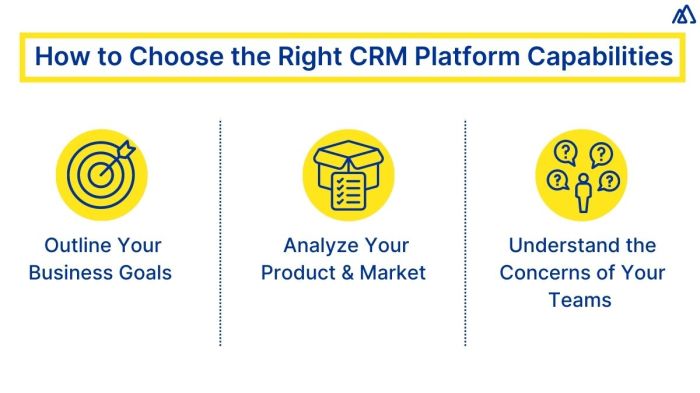
Source: kylas.io
In today’s hyper-connected world, data breaches are a significant threat, and for businesses relying on CRM systems, the stakes are particularly high. Choosing a CRM system without a robust security framework is akin to leaving your front door unlocked – a recipe for disaster. Protecting sensitive customer information is not just ethically sound, it’s legally mandated and crucial for maintaining trust and brand reputation. This section will delve into the critical aspects of data security and privacy when selecting and implementing your CRM solution.
Protecting customer data is paramount, especially with regulations like GDPR and CCPA in place. These regulations demand stringent data handling practices, imposing significant penalties for non-compliance. A CRM system that doesn’t meet these standards could expose your business to hefty fines and irreparable reputational damage. Choosing the right CRM involves more than just functionality; it’s about building a secure ecosystem that protects your business and your customers.
Compliance Requirements and Standards
Meeting compliance requirements like GDPR (General Data Protection Regulation) and CCPA (California Consumer Privacy Act) is non-negotiable. GDPR, applicable across the European Union, grants individuals significant control over their personal data, including the right to access, rectify, and erase their information. CCPA, similarly, provides California residents with rights regarding their personal data. A CRM system must offer features that facilitate compliance with these regulations, such as data encryption, consent management tools, and data subject access request (DSAR) capabilities. Failing to comply can lead to substantial fines, legal battles, and severe damage to your brand’s credibility. For example, a hypothetical company, “DataWise Solutions,” faced a $10 million fine for GDPR violations stemming from inadequate data security practices within their CRM system. This illustrates the high cost of negligence.
Data Protection Measures within the CRM System
Implementing robust data protection measures is crucial. This involves a multi-layered approach. Encryption, both in transit and at rest, is vital to safeguard data from unauthorized access. Access control mechanisms, such as role-based permissions, limit access to sensitive data based on an employee’s role and responsibilities. Regular security audits and penetration testing can identify vulnerabilities before they can be exploited. Furthermore, employee training on data security best practices is essential to prevent human error, a major cause of many data breaches. Imagine a scenario where an employee accidentally shares sensitive customer data via email due to a lack of awareness. Implementing rigorous security protocols, coupled with regular training, mitigates this risk. Finally, incident response planning is crucial; having a clear plan in place to address data breaches quickly and effectively can minimize damage.
Final Summary
Choosing the right CRM system isn’t just about ticking boxes; it’s about aligning technology with your business goals. By carefully considering your needs, evaluating features, and understanding the long-term implications of your choice, you can unlock the power of a streamlined system. Remember, the right CRM isn’t just a software; it’s an investment in your future success. So, ditch the spreadsheets and embrace the efficiency – your business (and your sanity) will thank you.

